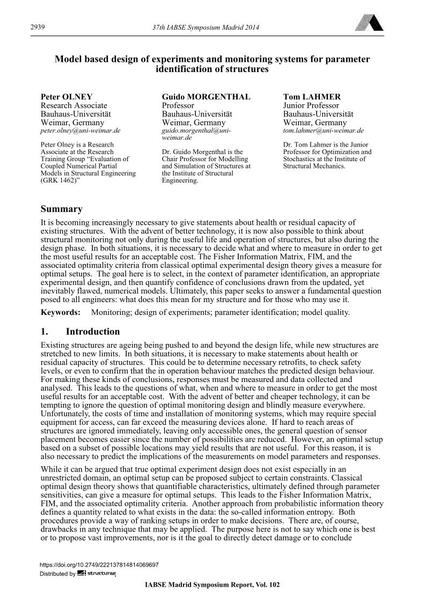Model based design of experiments and monitoring systems for parameter identification of structures

|
|
|||||||||||
Détails bibliographiques
| Auteur(s): |
Peter Olney
Guido Morgenthal Tom Lahmer |
||||
|---|---|---|---|---|---|
| Médium: | papier de conférence | ||||
| Langue(s): | anglais | ||||
| Conférence: | IABSE Symposium: Engineering for Progress, Nature and People, Madrid, Spain, 3-5 September 2014 | ||||
| Publié dans: | IABSE Symposium Madrid 2014 | ||||
|
|||||
| Page(s): | 2939-2946 | ||||
| Nombre total de pages (du PDF): | 8 | ||||
| Année: | 2014 | ||||
| DOI: | 10.2749/222137814814069697 | ||||
| Abstrait: |
It is becoming increasingly necessary to give statements about health or residual capacity of existing structures. With the advent of better technology, it is now also possible to think about structural monitoring not only during the useful life and operation of structures, but also during the design phase. In both situations, it is necessary to decide what and where to measure in order to get the most useful results for an acceptable cost. The Fisher Information Matrix, FIM, and the associated optimality criteria from classical optimal experimental design theory gives a measure for optimal setups. The goal here is to select, in the context of parameter identification, an appropriate experimental design, and then quantify confidence of conclusions drawn from the updated, yet inevitably flawed, numerical models. Ultimately, this paper seeks to answer a fundamental question posed to all engineers: what does this mean for my structure and for those who may use it. |
||||
